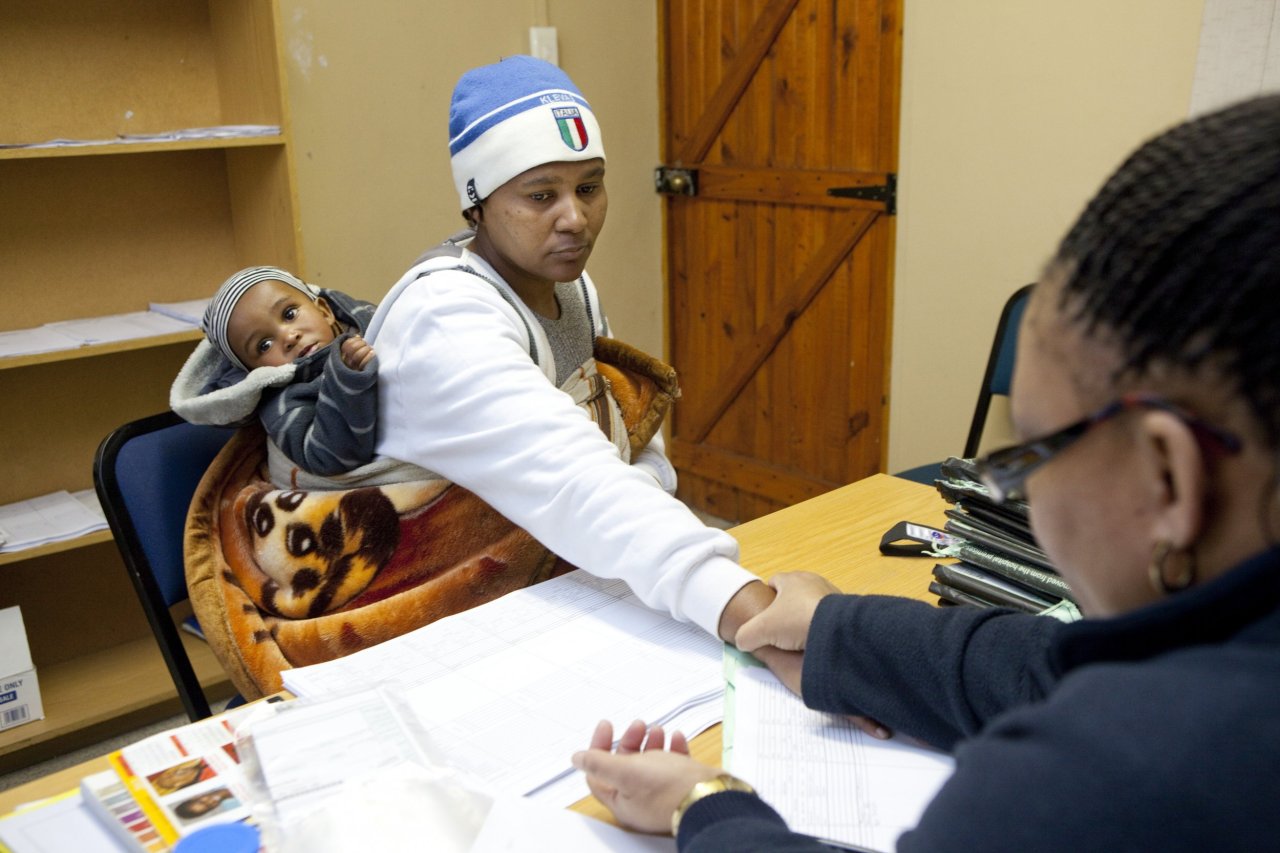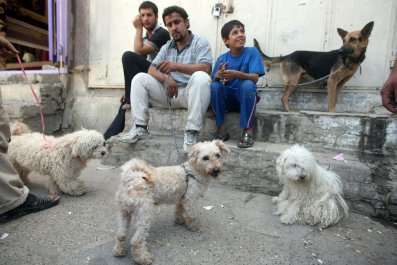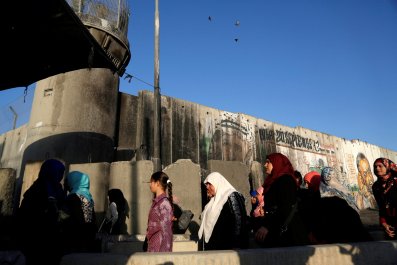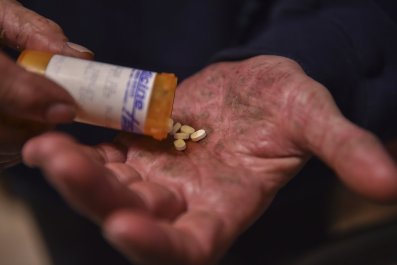Miranda was four months pregnant and extremely anxious when she got her first HIV test. She had long been afraid of a positive diagnosis, and shortly after stepping into a tent offering free HIV tests at a taxi stand in central Johannesburg, her fear was confirmed.
Miranda—who asked to use a pseudonym to protect her safety and privacy—had never been tested. "[I thought], It's not going to happen to me.… [But] part of me knew it was true. I wasn't handling it very well." Nor was her partner. "He would tell me that I was the one who brought [HIV] into our house and get physical with me."
After her diagnosis, Miranda was referred to Safe and Sound, a program to reduce violence against pregnant women in South Africa, where it is disturbingly common. Most women in the program, which ended in July 2016, had never spoken to anyone about the violence they'd endured, says Abigail Hatcher, a senior researcher at the University of the Witwatersrand School of Public Health, who is also affiliated with the University of California, San Francisco.
Miranda's experience of having her partner turn violent because of her HIV diagnosis is frequent in South Africa, where roughly one-fifth of reproductive-age women are HIV-positive, according to government statistics. Black African women have the highest HIV prevalence in South Africa, at 31.6 percent, according to the U.N.; women aged 20 to 24 have a three times higher HIV prevalence than men the same age. Why the gender gap? In addition to rape and sexual violence, coercive or controlling behavior, such as a man refusing to use a condom or restricting other forms of birth control, can increase the risk of contracting HIV. Women who are HIV-positive and experience intimate partner violence are half as likely to take their HIV medications as women in nonviolent relationships, leaving them in much poorer health, according to a 2015 study by Hatcher and her colleagues.
South Africa has an abysmal record when it comes to violence against women. Between 40 and 50 percent of women in South Africa say they've experienced intimate-partner violence. How is all this violence linked to HIV? Some women who participated in Safe and Sound said their partners turned violent after the women disclosed they were HIV-positive. In other cases, partners became violent after seeing them take their HIV medication or use birth control like a condom, which reminded the men of their partner's status. Among women who took part in the program, just one-quarter said they'd used condoms the last time they had sex, fearing the reaction from their partners.
Sihle—who requested that only her first name to be used to protect her privacy—started attending Safe and Sound after she came close to having a miscarriage from stress-related complications. While she was enduring violence and abuse from the man who got her pregnant, she found out that she was HIV-positive, but she didn't tell him, fearing he would accuse her of cheating on him. He denied having anything to do with the child, and the physical abuse continued through her pregnancy, until she finally left him. If she had stayed, she says, "probably by now I'd be dead and buried."
Stop the Blessers
Africa is "the continent bearing much of the world's HIV burden," says UNICEF, the U.N.'s child protection agency, and that means mostly girls and young women. Vivian Lopez, an HIV specialist at UNICEF, says adolescent girls and young women around the world have the highest risk of contracting HIV, and a recent UNICEF report found that three out of four new AIDS infections occur among girls aged 15 to 19. Just a quarter of girls and a third of boys in South Africa have a proper understanding of how HIV is transmitted and can be prevented, according to the U.N.
South Africa offers all pregnant women an HIV test, and if it's positive, they are immediately put on drugs to prevent the transmission of HIV. The prevention of mother-to-child transmission is a standout success story in South Africa's fight against HIV—between 2014 and 2015, just 1.5 percent of babies born in South Africa had HIV, while an increase in the use of antiretroviral treatment led to a 20 percent drop in child mortality.
Lopez says gender inequality is one factor in the high rate of HIV infection among young women on the continent, as are the many sexual relations between South African men and young women, usually between 15 and 24. These relationships, in which the man showers his partner with gifts, money and trips, have a dark side: Men might refuse to wear a condom, and the young women risk being treated violently by their partners, who believe they are entitled to sex in exchange for providing financial benefits. Both can result in contracting HIV.
Much effort and money has been spent on making sugar daddies, or "blessers," as such men are known, unappealing. One approach, using programs that provide a poor or rural family with a steady income, is helping to reduce HIV transmission and risky sexual behavior, and helping keep girls in schools, says Lopez.
'I Knew It Was Not a Death Sentence'
Countries around the world need programs like Safe and Sound because violence against HIV-positive women can lead to a deterioration in their mental health, and some women stop taking their medication and develop suicidal tendencies, says Hatcher. Miranda says she developed anxiety and depression after her HIV diagnosis. She didn't stop taking her medication, but she'd shake every time she took it, anticipating a violent reaction from her partner. Safe and Sound helped Miranda and her partner get counseling to speak about their issues.
After the Safe and Sound program ended, Miranda sought out a permanent place to speak with other women who understand her difficulties. HIV, she says, is rarely talked about in South African media, where officials "just brush over it." She adds, "If all these media people are scared to face it, how do you expect people with it to feel?"
More women can benefit from similar programs, says Sihle. Both Miranda and Sihle say the program has helped them confront their diagnoses and lead healthier lives. "If you're not doing what you're supposed to do"—taking medication and good care of your health—"you're going to die fast," says Miranda. "You can't talk about the light at the end of the tunnel if you don't even get in the tunnel. I knew [my HIV diagnosis] was not a death sentence. Let's make it as normal as possible."
Reporting on this story was made possible by a grant from the International Reporting Project, which paid for flights and accommodations.





















